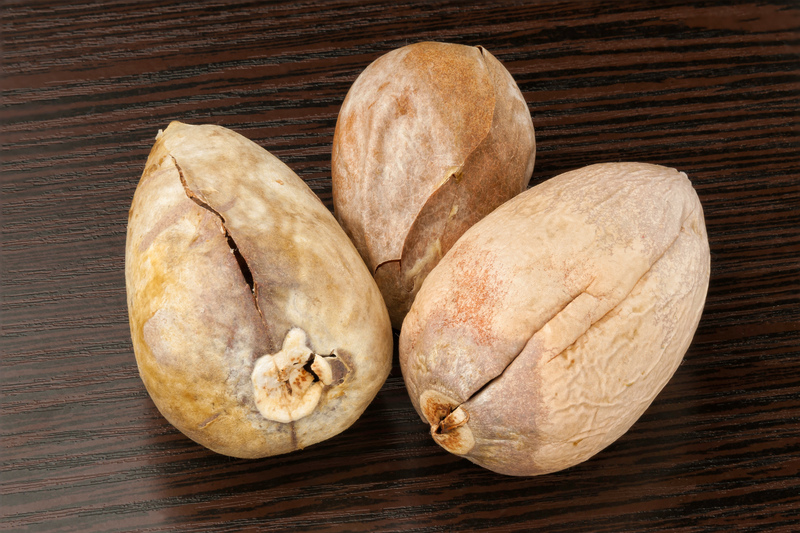Hedge Trimming Techniques for Stunning Garden Displays
Posted on 25/06/2025
Hedge Trimming Techniques for Stunning Garden Displays
Proper hedge trimming is an essential horticultural practice that transforms your garden's outline into a work of art. Whether you aspire to perfectly shaped topiary or a naturalistic, flowering hedgerow, hedge trimming techniques can significantly enhance the beauty and curb appeal of your landscape.

Why Hedge Trimming Matters for a Beautiful Garden
Consistent hedge maintenance does more than just keep your property looking tidy -- it fosters healthy plant growth, encourages density, and maintains your chosen design. Exploring different techniques for trimming hedges empowers gardeners to sculpt their vision, create privacy, and highlight features of the landscape. When executed correctly, these methods result in stunning garden displays that delight all year round.
Understanding the Basics: Types of Hedges
Not all hedges are created equal, and each variety benefits from distinct hedge cutting methods. Before wielding your shears or trimmers, it's important to understand the nature of your hedge:
- Evergreen Hedges: Such as boxwood, yew, and privet. They provide year-round structure and respond well to regular shaping.
- Deciduous Hedges: Like hornbeam and beech, these shed their leaves but maintain form and texture in all seasons.
- Flowering Hedges: Examples include forsythia, lilac, and hydrangea. These are often trimmed after flowering to preserve blooms for the next season.
Identifying your type will guide the hedge trimming techniques you choose.
Essential Tools for Effective Hedge Trimming
The right tools are crucial for precision, safety, and efficiency in trimming hedges. Here are the essentials for any gardener's shed:
- Hand Shears: Ideal for fine, detailed shaping and smaller hedges.
- Powered Hedge Trimmers: Available in electric, battery, and petrol models for rapid, uniform cuts on large or tough hedges.
- Loppers: For cutting thicker branches beyond hand shears' capacity.
- Pruning Saw: Useful for older or overgrown hedges with woody stems.
- Protective Gear: Gloves, goggles, and long sleeves ensure safety from thorns and debris.
Tip: Always maintain sharpened, clean tools for smoother cuts and healthier hedges.
Best Times of Year to Trim Hedges
Timing is everything when it comes to hedge pruning techniques for beautiful results:
- Evergreen Hedges: Late spring or early summer, with light trims as needed until late summer.
- Deciduous Hedges: Late winter or early spring before buds break.
- Flowering Hedges: Immediately after the main blooming period for each variety.
Avoid trimming during extremely cold weather or intense heat, as both can stress the plant. Regular light trims encourage thick growth, while hard pruning rejuvenates overgrown shrubbery.
Basic Principles of Trimming for Gorgeous Hedges
The secret to an ornate garden hedge display lies in following classic horticultural principles:
- Taper the Shape: Always trim so the base of the hedge is wider than the top. This allows even sunlight exposure and prevents lower branches from thinning out.
- Consistent Profile: Use taut strings or stakes as guides for straighter lines and smooth, geometric shapes.
- Gradual Approach: Take several passes rather than removing too much at once. It's better to undercut and refine.
- Angle Your Cuts: Tilt the blades slightly to encourage water runoff and deter disease.
Traditional Hedge Trimming Techniques
Formal Hedge Trimming
Perfect for English-style gardens, formal hedges require precise shaping and even lines. These hedge shaping methods involve:
- Marking a template: Stakes, string, or bamboo canes create visual guides.
- Level tops and sides: Keep shears level and trim in slow, controlled movements.
- Symmetry: Step back frequently to check uniformity from different angles.
Informal Hedge Trimming
An informal, natural look suits flowering and native hedges. The aim is to retain the plant's natural habit while removing only dead or unruly stems. Features include:
- Selective cutting: Prune internal branches for light and air, boosting flowering and fruiting.
- Layered shapes: Allow for uneven edges and blossoming tips for a relaxed style.
Topiary and Ornamental Cuts
For true "wow factor," try advanced decorative hedge trimming ideas like spirals, balls, or animal figures. This requires patience, steady hands, and frequent attention. Start simple, gradually working into intricate designs as you master the technique.
Practical Steps: How to Trim Hedges Like a Pro
- Inspect and Clean: Remove debris, check for disease, and sterilize your tools.
- Mark Your Guides: Use string for straight lines or templates for curves and shapes.
- Start From the Bottom: Trim upwards, keeping the base broader than the top.
- Shape the Sides: Employ sweeping, controlled motions parallel to the hedge face.
- Finish the Top: Cut carefully, ensuring symmetry and cleanliness of line.
- Step Back Often: Continually check your work from a distance to correct mistakes early.
- Clean Up: Collect clippings to prevent fungal issues and mulch or compost the green waste.
Note: For high or wide hedges, use a sturdy, safe ladder and consider professional assistance where safety demands.
Advanced Tips for Year-round Hedge Perfection
- Feed and Water: After pruning, feed your hedge with a balanced fertilizer and water deeply to promote recovery.
- Pest and Disease Control: Pruning exposes plants to potential infections. Inspect regularly for pests like aphids or scale, and treat promptly.
- Deadheading and Rejuvenation: Remove dead, diseased, or old branches periodically. For mature hedges, consider hard pruning in sections over seasons to restore vigor.
- Use Hedge Trimming Patterns: Layered heights or alternating species can create eye-catching garden displays.
Design Inspiration for Breathtaking Hedge Displays
Looking to take your garden hedge display to the next level? Here are some creative directions:
- Living Sculptures: Experiment with topiary animals, geometric shapes, or arches.
- Color Contrasts: Combine evergreen structure with seasonal-flowering hedge plants for bursts of color.
- Mixed Species: Plant variegated foliage or scented varieties together for multi-sensory appeal.
- Tiered Borders: Position low and high hedges in layers to create depth and intrigue.
Well-designed hedges serve as focal points, natural screens, borders, or backdrops for other garden plants.
Common Mistakes to Avoid When Trimming Hedges
Even seasoned gardeners can fall into common pitfalls. Sidestep these errors to ensure healthy and beautiful hedges:
- Cutting at the Wrong Time: Trimming during dormancy or bloom formation can reduce flowering and health.
- Taking Too Much Off: Overzealous pruning may shock the plant and leave bare patches.
- Shaping with a Flat Top: A flat-topped hedge can cause snow or water buildup, leading to damage.
- Neglecting the Base: A narrow bottom creates poor light penetration and causes thinning.
- Poor Tool Maintenance: Dull or dirty blades create ragged cuts and invite disease.
Hedge Trimming Safety: Keeping You and Your Hedges Protected
While hedge clipping can be relaxing, accidents are possible if you're not prepared. To keep safe:
- Wear sturdy gloves, non-slip shoes, and goggles.
- Use only sharp, well-maintained tools, and disconnect power tools when not in use.
- Set up ladders on solid ground and never overreach.
- Be mindful of wildlife, such as nesting birds, especially in spring.
- Never trim hedges near power lines -- hire a professional for hazardous work.

Frequently Asked Questions About Hedge Trimming Techniques
How often should I trim my hedges for the best display?
Evergreen hedges may need two trims per growing season, while fast-growing or informal hedges often benefit from more frequent, light pruning. Flowering hedges should be trimmed after their flowering period.
What is the best shape for healthy hedges?
A tapered hedge -- where the top is slightly narrower than the base -- is ideal. This shape ensures sunlight reaches all parts of the plant, maintaining fullness from top to bottom.
Can I rejuvenate an old, overgrown hedge?
Absolutely! Hard pruning can restore an old hedge's health, but it's best done in phases to avoid plant shock. Cut back one side or section per year, giving the plant time to recover.
Conclusion: Achieving Stunning Garden Displays with Hedge Trimming
Mastering the art of hedge trimming for stunning garden displays requires patience, practice, and creativity. By understanding your hedge type, investing in quality tools, and employing both classic and creative hedge cutting techniques, you can create garden borders that are both healthy and visually spectacular. Remember: a well-trimmed hedge not only frames your garden's beauty but also adds lasting value to your landscape.
- Choose the right season for trimming
- Use proper tools and safety measures
- Experiment with shapes and design inspiration
- Maintain regularly for a lush, vibrant display
With these strategies and expert hedge pruning tips, transform your outdoor space into an inspiring garden showcase that will charm visitors and become the envy of the neighborhood.

